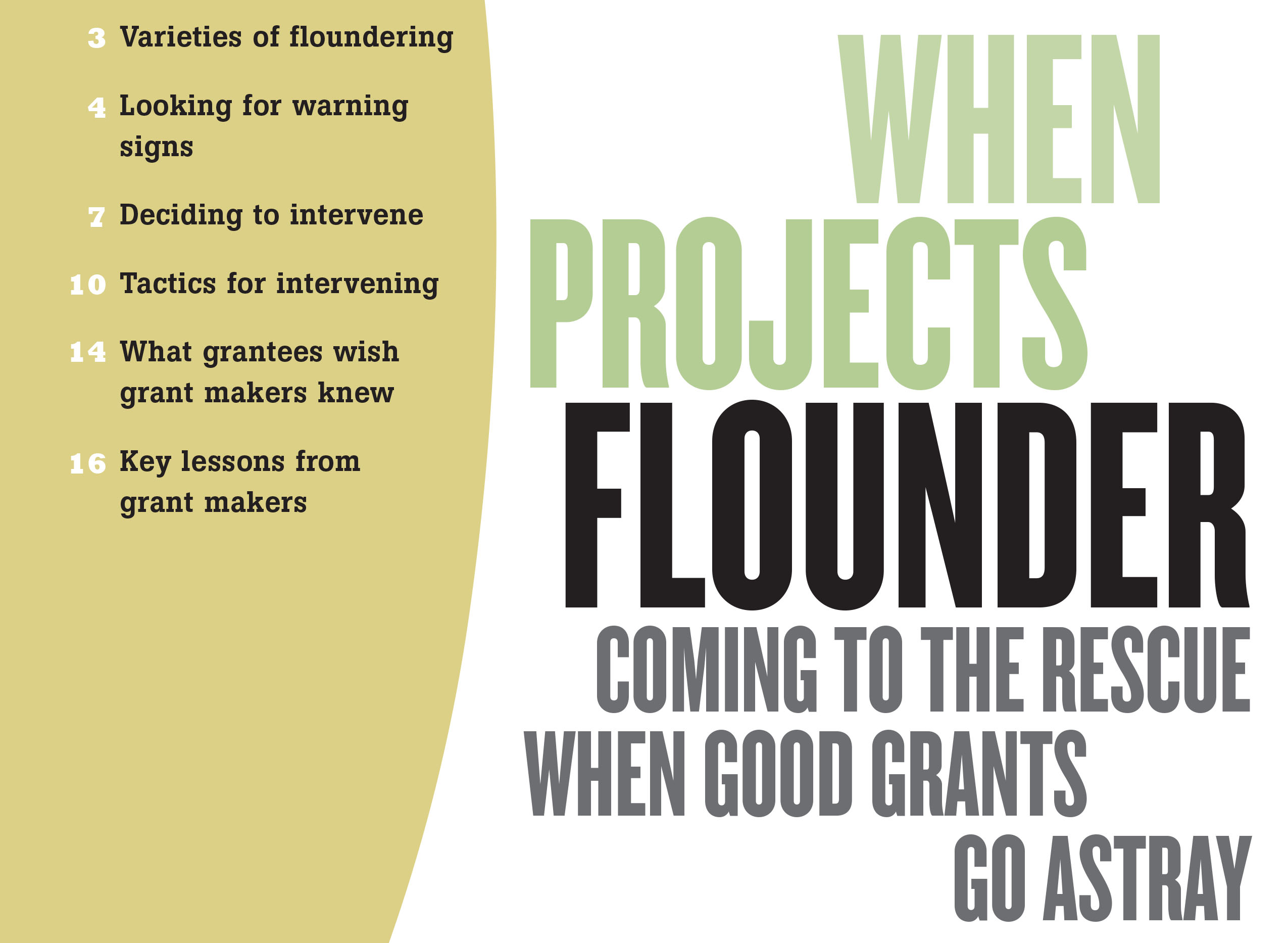A Floundering Hospital Program A Q&A with a senior grantmaker
GRANTMAKER: A senior grantmaker at a small hospital-conversion foundation that promotes access to health and wellness services.
GRANTEE: A well-respected health-care nonprofit that was doing a surprisingly poor job implementing a home-visiting program.
THE SITUATION: Relatively manageable. If the problem is discovered early on, and if the foundation can point the grantee toward best practice, a program in trouble can be turned around without a protracted struggle. This can be a far cry from situations where the organization, not the program, is floundering — and further still from situations where the funder and grantee are struggling about strategy, not performance.
Q. What were you trying to accomplish with the grantee, and how did you know things were not going well?
A. We awarded six grants to support home-visiting programs that would send nurses and health aides to elderly shut-ins or teen mothers — people who were unlikely or unable to get to the hospital or doctor’s office. We require a report after the first six months of a grant, so we can often spot a problem early on. In this case, we discovered that grantees’ performance varied widely. Three of the six were doing well, but three were struggling. One in particular — run by a strong organization with lots of health expertise — was completing only 16 percent of their visits! So it was clear from the very first report that there was a problem.
Q. How did you help the grantee get on track without being threatening?
A. We wrote to the three high-performers and asked: What are you doing that’s working so well? We used their answers to create a top-ten list of practices, which we circulated to everyone. We then suggested a meeting of the top performers and the struggling grantees, to sit down and talk turkey. The weaker programs picked up a lot. Lots had to do with how to operate in dangerous neighborhoods. It turns out some of the grantees had really well-designed programs with great technical competence, but they lacked street savvy. We helped them get some of that savvy.
Q. The result?
A. By the next report, performance had really improved.

